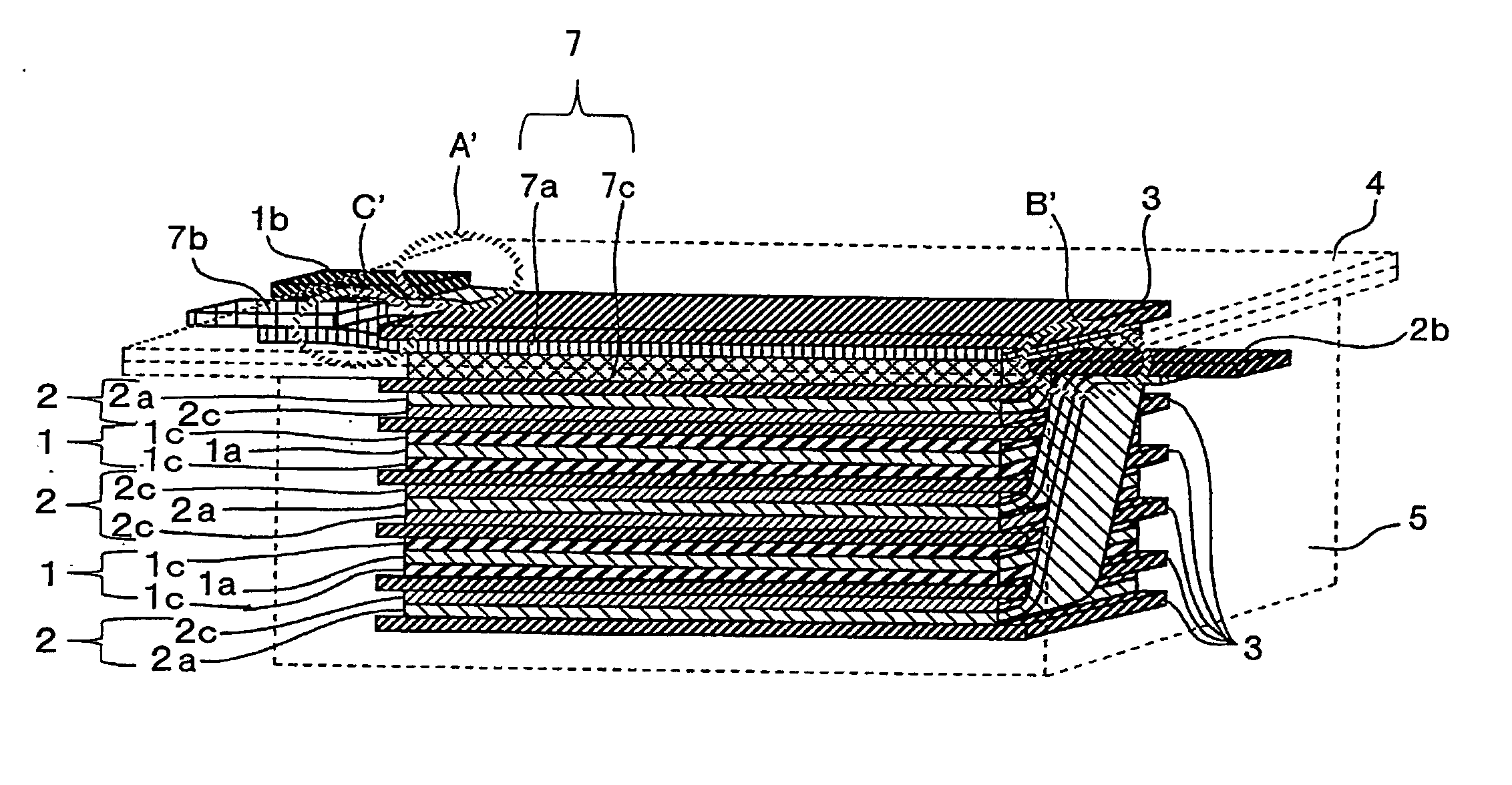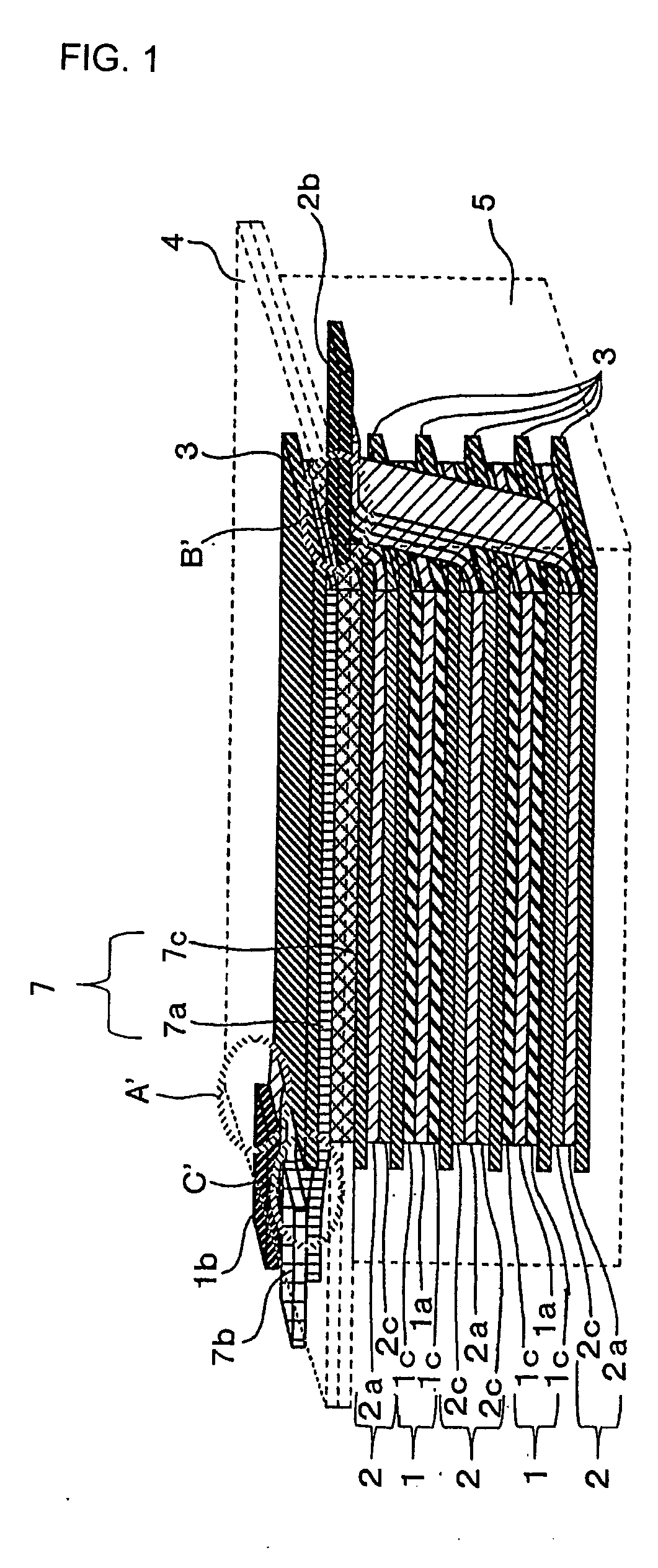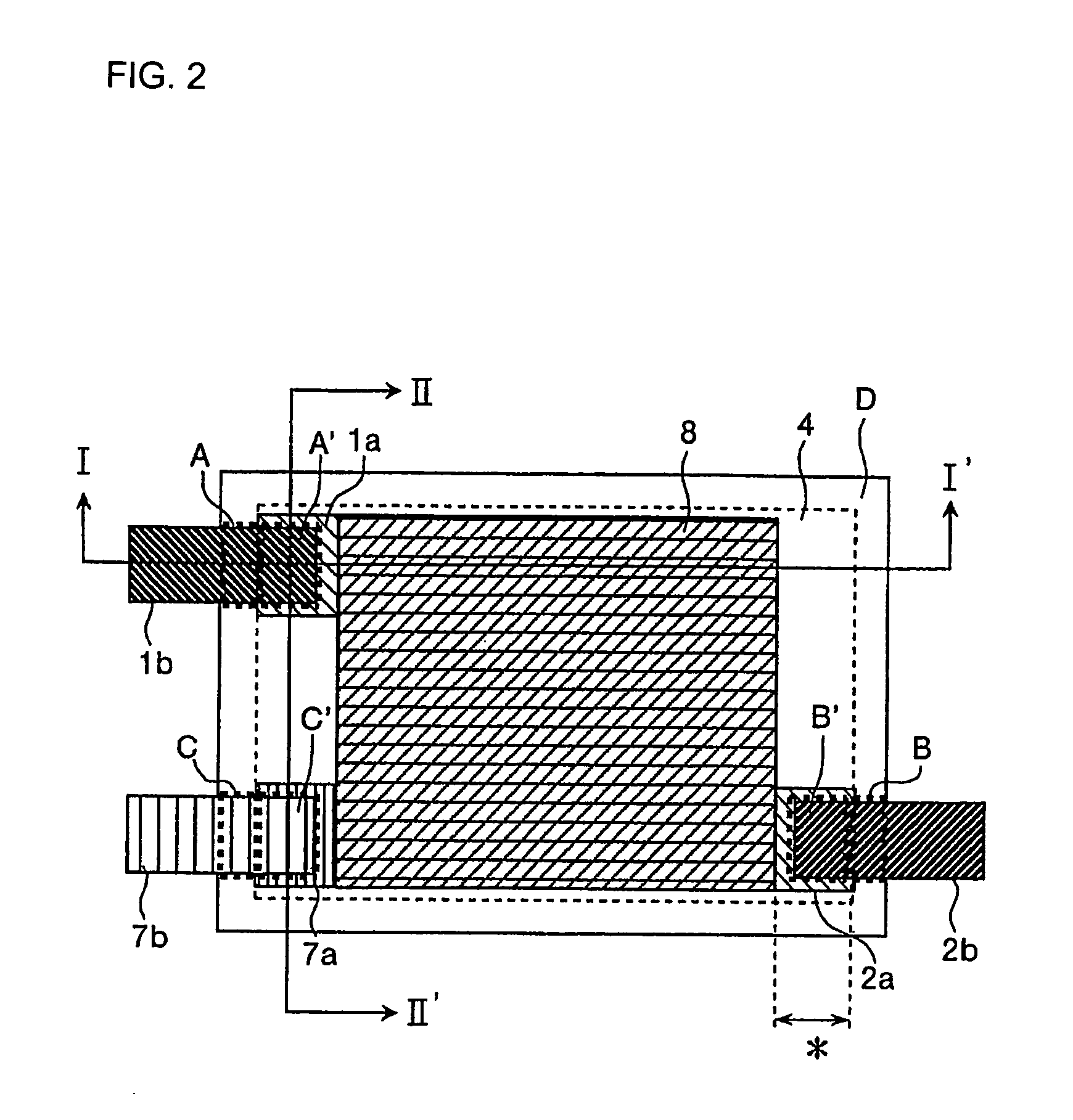Electrical storage device and manufacturing electrical storage device
- Summary
- Abstract
- Description
- Claims
- Application Information
AI Technical Summary
Benefits of technology
Problems solved by technology
Method used
Image
Examples
first embodiment
[0152]FIG. 1 is a perspective view of a first embodiment of the present invention; FIG. 2 is a plan view of a first embodiment of the present invention; FIG. 3 is a cross-sectional view taken along I-I′ of FIG. 2; and FIG. 4 is a cross-sectional view taken along II-II′ of FIG. 2.
[0153] In the first embodiment, a lithium electrode 7 is arranged on an electrode stack unit 6, in which an electrode couple including a positive electrode 1 and a negative electrode 2 are stacked one after another so as to form a three-electrode stack unit 8.
[0154] In the first embodiment, three sheets of negative electrode collector 2a, and two sheets of positive electrode collector la are used to form the electrode stack unit 6. The electrode stack unit 6 includes separators 3 between the positive electrodes and the negative electrodes in order to prevent direct contact between the positive and negative electrodes. Also, from the lower layer, there are stacked a first negative electrode collector 2a hav...
second embodiment
[0165] The second embodiment will now be described. FIG. 8 is a plan view of the second embodiment. The second embodiment has the same arrangement as in the first embodiment except that three-electrode external terminals are protruded at the same side.
[0166] Like numbers between the first and second embodiments refer to like elements, so that only different portions will be described in detail. Referring to the second embodiment, the positive electrode terminal 1b, the negative electrode terminal 2b, and the lithium electrode terminal 7b are protruded out of the same side. When the laminated film has the same size, the electrode size can be made large with the positive electrode terminal 1b, the negative electrode terminal 2b and the lithium electrode terminal 7b, so that a capacity is preferably increased. Comparing the first embodiment where the positive electrode terminal 1b, the lithium electrode terminal 7b, and the negative electrode terminal 2b are protruded at the opposite ...
third embodiment
[0167] The third embodiment will now be described. FIG. 9 is a plan view of the third embodiment. The third embodiment involves a plan view of a capacitor having an arrangement in which the plate type lithium electrode is rolled into the center. FIG. 10 is a cross-sectional view taken along an I-I′ line of FIG. 9, and FIG. 11 is a cross-sectional view of II-II′ line of FIG. 9. Like numbers between the first and third embodiments refer to like elements, so that only different portions will be described in detail.
[0168] In the third embodiment, the plate type lithium electrode 7 is rolled into the center as shown in FIG. 10. The lithium electrode 7 is formed on both surfaces of the lithium electrode collector 7a. The positive electrode 1 and the negative electrode 2 are formed on one surface of the ribbon type positive electrode collector 1a and negative electrode collector 2a, respectively. With a center of the lithium electrode collector 7a having the lithium electrode 7 arranged o...
PUM
| Property | Measurement | Unit |
|---|---|---|
| Weight | aaaaa | aaaaa |
| Ratio | aaaaa | aaaaa |
| Electrical conductor | aaaaa | aaaaa |
Abstract
Description
Claims
Application Information
 Login to View More
Login to View More - R&D
- Intellectual Property
- Life Sciences
- Materials
- Tech Scout
- Unparalleled Data Quality
- Higher Quality Content
- 60% Fewer Hallucinations
Browse by: Latest US Patents, China's latest patents, Technical Efficacy Thesaurus, Application Domain, Technology Topic, Popular Technical Reports.
© 2025 PatSnap. All rights reserved.Legal|Privacy policy|Modern Slavery Act Transparency Statement|Sitemap|About US| Contact US: help@patsnap.com



